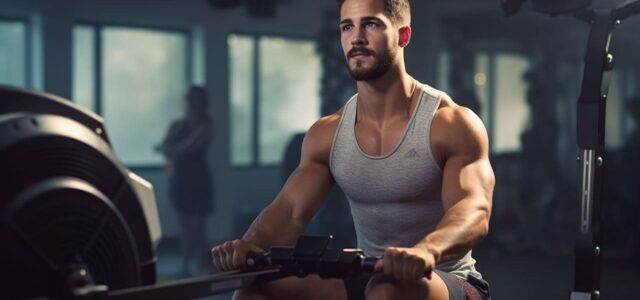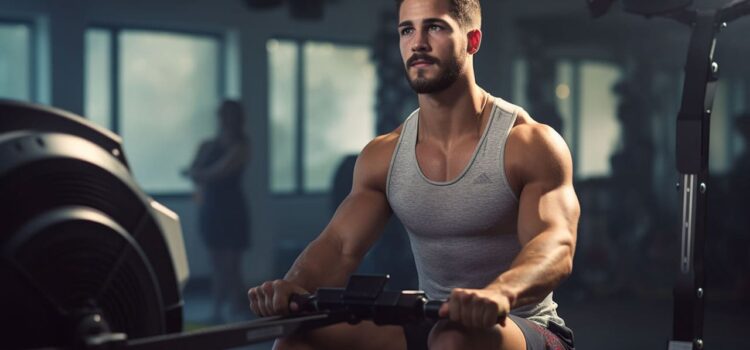


Introduction
As a seasoned running coach with years of experience under my belt, I’ve seen the impact that cross-training can have on a runner’s performance. I’ve often been asked, “What’s the best cross-training activity for half marathon preparation?” While there’s no one-size-fits-all answer, one method stands out for its unique benefits – rowing. Yes, you read that right. Rowing to cross-train can offer exceptional benefits to half marathon trainees, which I will be discussing in this article.
Why Choose Rowing for Cross-training?
Rowing might not be the first activity that comes to mind when considering cross-training for running. However, it provides a full-body workout, targets a multitude of muscle groups, many of which are important for running, and is low impact, thereby reducing the risk of injuries. Moreover, it adds variety to your training routine, helping to ward off boredom and burnout.
Unraveling the Benefits of Rowing
Whole Body Workout
Rowing is one of the few exercises that engage almost 85% of your body’s muscles across nine major muscle groups. These include the quads, hamstrings, glutes, lats, core, shoulders, and arms. By providing a comprehensive strength workout, rowing can enhance your running form, boost your power, and increase your endurance – three critical components for achieving your half marathon personal best.
Low-Impact
One of the main appeals of rowing is that it’s a low-impact exercise, making it easy on your joints. As a runner, you are constantly putting stress on your joints, particularly your knees. Incorporating low-impact activities like rowing gives your joints a break, which can be particularly beneficial for recovery days.
Boost Cardiovascular Fitness
Rowing is also an excellent aerobic exercise. It gets your heart rate up and improves cardiovascular fitness, which is paramount for any distance running, especially half marathons.
Rowing and Running: Perfect Companions
Although rowing and running may seem like different worlds, they complement each other beautifully. The aerobic conditioning from rowing transfers well to running, helping you maintain a steady pace over longer distances. The leg power developed in rowing can make you a stronger hill runner. At the same time, the arm and shoulder strength can improve your arm swing, especially when you’re fatigued.
Incorporating Rowing into Your Half Marathon Training
Integrating rowing into your training routine can be simple. It can serve as an active recovery workout on rest days or form part of your strength and conditioning regime. Start with 15 to 20-minute sessions and gradually increase your rowing time as your fitness improves. Remember, consistency is key, and it’s better to row a little often than a lot all at once.
Rowing Techniques for Runners
Rowing can seem like a complex exercise at first glance, but it breaks down into four fundamental phases: the catch, the drive, the finish, and the recovery. Mastering these stages can lead to significant improvements in your rowing workouts.
The Catch
The catch is the initial phase of the rowing stroke where you ‘catch’ the water. In this phase, you want to reach forward with your arms outstretched and your shins vertical. Keep your back straight and your core engaged. You should be at the front of the rowing machine, ready to initiate the stroke.
The Drive
The drive phase is where you generate the power. This phase is initiated by pushing through your legs, followed by a backward lean of the torso, and finally, pulling the handlebar into your lower chest with your arms. It’s essential to remember this sequence – legs, then body, then arms – to maximize power and maintain an efficient stroke.
The Finish
This is the end of the drive phase. Your legs should be fully extended, your body leaned slightly back, and your elbows tucked in as you hold the handlebar at your lower chest. This is the point of maximum exertion and where you’re ‘finishing’ your stroke.
The Recovery
The recovery phase is about returning to the catch position in the most efficient way possible. Essentially, it’s the reverse of the drive. Extend your arms out, hinge forward from the hips, and finally, bend your knees to slide forward on the seat. This phase should be relaxed and controlled, allowing you to recover in preparation for the next stroke.
Remember, rowing is as much about rhythm and timing as it is about strength. Take the time to master these phases and make your movements fluid and seamless. By doing so, you will improve the effectiveness of your rowing workouts, reduce the risk of injury, and further enhance your half marathon training.
Closing Thoughts
Don’t overlook the power of cross-training in your half marathon preparation. Diversifying your training routine with an activity like rowing can lead to significant improvements in your running performance. It can help you build strength, improve your cardiovascular fitness, and provide a welcome break from the impact of running. So why not give rowing a try and see how it can boost your half marathon training?
No comments so far.
Be first to leave comment below.